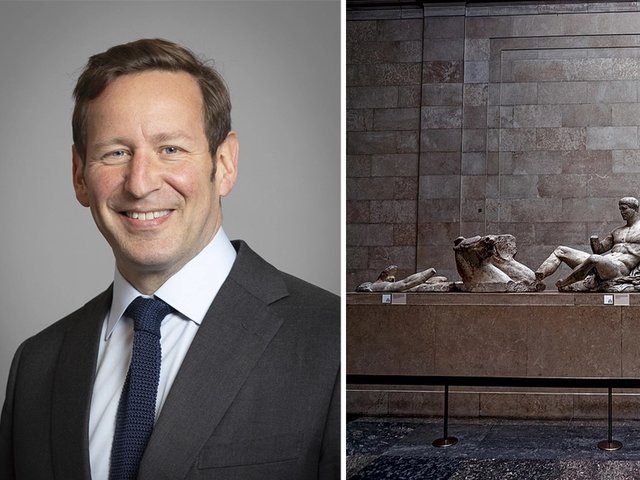Last month the British Committee for the Restitution of the Parthenon Marbles released a MORI poll on UK public opinion. In answer to the question, “If there were a referendum on whether the Elgin/Parthenon Marbles should be returned to Greece, how would you vote?’, the response was 40% to return them to Greece, 16% to keep them at the British Museum, and the remaining 44% were “don’t knows” or would not vote.
o Meanwhile, Greek interest in other fragments has been expressed. Just outside the British Museum’s main display of the Parthenon sculptures in the Duveen Gallery is a small room with two architectural elements acquired in 1802 by Lord Elgin: a Doric capital and a “drum” of a column. These pieces are believed to have been found abandoned near the Parthenon, and were taken as examples of its architecture. Professor Anthony Snodgrass, chairman of the British Committee for the Restitution of the Parthenon Marbles, has just come back from a visit to Athens, where archaeologists told him that they would like the museum to return the capital and drum to the Acropolis.
“The archaeologists would ideally like to be able to use the two British Museum architectural elements on the structure, because that is where they belong. During the restoration work they are putting back other ancient components in their correct places,” Professor Snodgrass told The Art Newspaper. The Acropolis restoration project has been underway for many years, and archaeologists are now working on the section of the north side where these two elements were originally positioned.
The BM regards the capital and drum as an integral part of the Elgin collection, and it cites the usual reasons against returning them to Athens: the Elgin items were legally acquired; the British Museum is not allowed to deaccession; and the Marbles are on public view to millions of visitors in a museum of world culture. There is an additional complication with the architectural fragments, since although the Greeks have now said they would be happy to receive the sculptures on long-term loan, it would be even more difficult to lend the capital and drum, as they would have to be permanently affixed to the Parthenon.
BM curators point out that the surfaces of the two architectural elements are uniquely well preserved, because they have not suffered from the Athens climate for the past two centuries. Fortunately, they were also spared the damaging “cleaning” to which the Parthenon sculptures in London were subjected in the 1930s. The argument is that it would therefore be folly to replace these archaeologically important survivals back on the original structure.
o On 12 November the Marbles issue will be highlighted once again when Greek culture minister Professor Evangelos Venizelos visits London, along with New Acropolis Museum president Professor Dimitris Pandermalis and architect Bernard Tschumi. They will be speaking at the Congress Centre, in Great Russell Street, almost on the British Museum’s doorstep. Although the New Acropolis Museum is due to open in 2004 to coincide with the Athens Olympic Games, questions have been asked as to whether there will be yet another delay in this long-running project. Professor Venizelos is also expected to hold a private meeting with UK culture secretary Mrs Tessa Jowell.
Originally appeared in The Art Newspaper as 'Parthenon matters'


